Truncated Mfn2-overexpressing cells exhibit a marked enhancement of the mitochondrial membrane potential and the stimulation of ATP production in GCDCA-treated 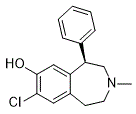 L02 cells. In this study, we observed that the transient transfection of hMfn2602�C757 was predominantly localized in the mitochondria and co-localized with mitochondrial markers in immunofluorescence assays. These data agree with a previous study in which hMfn2602�C757 was also transiently transfected into HeLa cells, and most of the truncated protein was recruited into mitochondria to directly modulate all of the OXPHOS complexes. Furthermore, our data support additional roles for Mfn2 that extend beyond the regulation of the mitochondrial fusion in GCDCA-induced hepatotoxicity. In line with these findings, Mfn2 plays a secondary role in mitochondrial fusion in several pathophysiological conditions, including diabetes, vascular proliferative disorders, and Charcot-Marie-Tooth type 2A neuropathy. However, as the specific mechanisms involved in the effects caused by the increased activity of the truncated form of Mfn2 remain unknown, we consider two distinct alternatives. First, hMfn2602�C757 has been shown to modulate metabolism through the function of the OXPHOS system. Second, hMfn2602�C757 may affect the mitochondrial recruitment of Bax or Drp1 during cell death. The two hypotheses are not mutually exclusive, and the details of the mechanisms need further research. Taken together, our in vitro studies suggest that there may be two biological roles for Mfn2 during the progression extrahepatic cholestasis. On the one hand, Mfn2, which plays significant roles during mitochondrial dysfunction, has been implicated in the control of mitochondrial network. On the other hand, the direct effects of Mfn2 on mitochondrial metabolism do not all depend on its effects as a mitochondrial fusion protein. Specifically, Mfn2 may serve as a therapeutic target for the development of novel treatments to prevent liver Even though other proteins detected in the extracts had similar transcript levels as the Lingulodinium hist damage in patients with extrahepatic cholestasis. The NBS gene product, NBS1, is a part of the Mre11Rad50-NBS1 complex that is essential for DNA double strand break repair. NBS1 carries out its checkpoint functions through the phosphorylation by ataxia-telangiectasia mutated protein after ionizing radiation. We previously demonstrated that c-MYC, an oncoprotein, directly activates the expression of NBS1. The function of NBS1 related to proliferation is demonstrated by the phenotypes of diminished expansion of the inner cell mass of mutant blastocysts and cellular proliferation defects in Nbs1m/m mouse embryonic fibroblasts. Overexpression of NBS1 induces transformation activity through interacting with the p110 subunits of phosphoinositide 3-kinase to activate PI 3-kinase activity, indicating that NBS1 overexpression is an oncogenic event. In head and neck squamous cell carcinoma patients, increased NBS1 expression is a prognostic factor of aggressive head and neck cancer. All these results indicate that NBS1 overexpression may play an important role in tumorigenesis.
L02 cells. In this study, we observed that the transient transfection of hMfn2602�C757 was predominantly localized in the mitochondria and co-localized with mitochondrial markers in immunofluorescence assays. These data agree with a previous study in which hMfn2602�C757 was also transiently transfected into HeLa cells, and most of the truncated protein was recruited into mitochondria to directly modulate all of the OXPHOS complexes. Furthermore, our data support additional roles for Mfn2 that extend beyond the regulation of the mitochondrial fusion in GCDCA-induced hepatotoxicity. In line with these findings, Mfn2 plays a secondary role in mitochondrial fusion in several pathophysiological conditions, including diabetes, vascular proliferative disorders, and Charcot-Marie-Tooth type 2A neuropathy. However, as the specific mechanisms involved in the effects caused by the increased activity of the truncated form of Mfn2 remain unknown, we consider two distinct alternatives. First, hMfn2602�C757 has been shown to modulate metabolism through the function of the OXPHOS system. Second, hMfn2602�C757 may affect the mitochondrial recruitment of Bax or Drp1 during cell death. The two hypotheses are not mutually exclusive, and the details of the mechanisms need further research. Taken together, our in vitro studies suggest that there may be two biological roles for Mfn2 during the progression extrahepatic cholestasis. On the one hand, Mfn2, which plays significant roles during mitochondrial dysfunction, has been implicated in the control of mitochondrial network. On the other hand, the direct effects of Mfn2 on mitochondrial metabolism do not all depend on its effects as a mitochondrial fusion protein. Specifically, Mfn2 may serve as a therapeutic target for the development of novel treatments to prevent liver Even though other proteins detected in the extracts had similar transcript levels as the Lingulodinium hist damage in patients with extrahepatic cholestasis. The NBS gene product, NBS1, is a part of the Mre11Rad50-NBS1 complex that is essential for DNA double strand break repair. NBS1 carries out its checkpoint functions through the phosphorylation by ataxia-telangiectasia mutated protein after ionizing radiation. We previously demonstrated that c-MYC, an oncoprotein, directly activates the expression of NBS1. The function of NBS1 related to proliferation is demonstrated by the phenotypes of diminished expansion of the inner cell mass of mutant blastocysts and cellular proliferation defects in Nbs1m/m mouse embryonic fibroblasts. Overexpression of NBS1 induces transformation activity through interacting with the p110 subunits of phosphoinositide 3-kinase to activate PI 3-kinase activity, indicating that NBS1 overexpression is an oncogenic event. In head and neck squamous cell carcinoma patients, increased NBS1 expression is a prognostic factor of aggressive head and neck cancer. All these results indicate that NBS1 overexpression may play an important role in tumorigenesis.
Author: screening library
Conformational flooding for instance needs calculation possibly multiple flooding potentials
Extending the classical promote academic research health care benefits gprd adsorption simulation to 100 ns resulted only in a slight extension of the visited conformational space. Other results employing long classical simulations suggest that even after long simulation times, which seemingly equilibrated the system, sudden structural changes may occur. Comparing our results obtained by classical and accelerated molecular dynamics simulations we conclude that sufficient sampling of the conformational space is key to understanding protein adsorption. Since adsorption phenomena take place in 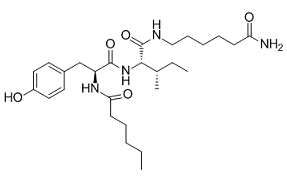 time scales extending from ms to hours, the use of classical MD simulations of a few nanoseconds up to 100 ns in an explicit water surrounding is not adequate for studying and describing the entire adsorption process. Our approach uses an explicit water environment with standard temperature and pressure control. By modifying the potential energy landscape through accelerated MD, conformational changes can occur in the time range accessible to simulation. Especially during adsorption the protein can get stuck in metastable states that hinder further spreading on hydrophobic surfaces. Beside many available advanced sampling methods, recently reviewed by Zuckerman, we would like to point out an approach by Wang et al. which uses biased replica-exchange molecular dynamics to study adsorption processes. Comparing biased-REMD to accelerated MD we emphasize that aMD, besides being easy to handle, is computationally more efficient since no different replicas have to be simulated; the latter feature limits biased-REMD to smaller systems. On the other hand, REMD will give exact dynamics with a known reweighting factor. The easiness of use and computational efficiency make aMD an ideal candidate for studying adsorption processes in large systems. Other interesting sampling techniques such as conformational flooding might be used as well to address adsorption studies but appear not so straightforward as aMD. Finally, coarse-grained models that might provide an interesting alternative for calculating large systems over long time scales always bear the risk of producing artifacts. Our results suggest that the monomeric form of BMP-2 does indeed unfold on a hydrophobic graphite surface as suggested by previous results. Despite the different protein structure this is in clear contrast to recent results by Utesch et al.. It appears logical that a classical 10 ns MD simulation, such as that performed in, cannot provide insight into structural rearrangements during adsorption since the conformational space is sampled only insufficiently. We note that even in cMD simulations extending over several hundred ns, it has been found that the final configuration is governed by sudden conformation jumps which may occur late in the simulation. Even though the dynamics of the adsorption process have been altered, the final adsorption state is most relevant in adsorption studies, since it can be compared with experimental results.
time scales extending from ms to hours, the use of classical MD simulations of a few nanoseconds up to 100 ns in an explicit water surrounding is not adequate for studying and describing the entire adsorption process. Our approach uses an explicit water environment with standard temperature and pressure control. By modifying the potential energy landscape through accelerated MD, conformational changes can occur in the time range accessible to simulation. Especially during adsorption the protein can get stuck in metastable states that hinder further spreading on hydrophobic surfaces. Beside many available advanced sampling methods, recently reviewed by Zuckerman, we would like to point out an approach by Wang et al. which uses biased replica-exchange molecular dynamics to study adsorption processes. Comparing biased-REMD to accelerated MD we emphasize that aMD, besides being easy to handle, is computationally more efficient since no different replicas have to be simulated; the latter feature limits biased-REMD to smaller systems. On the other hand, REMD will give exact dynamics with a known reweighting factor. The easiness of use and computational efficiency make aMD an ideal candidate for studying adsorption processes in large systems. Other interesting sampling techniques such as conformational flooding might be used as well to address adsorption studies but appear not so straightforward as aMD. Finally, coarse-grained models that might provide an interesting alternative for calculating large systems over long time scales always bear the risk of producing artifacts. Our results suggest that the monomeric form of BMP-2 does indeed unfold on a hydrophobic graphite surface as suggested by previous results. Despite the different protein structure this is in clear contrast to recent results by Utesch et al.. It appears logical that a classical 10 ns MD simulation, such as that performed in, cannot provide insight into structural rearrangements during adsorption since the conformational space is sampled only insufficiently. We note that even in cMD simulations extending over several hundred ns, it has been found that the final configuration is governed by sudden conformation jumps which may occur late in the simulation. Even though the dynamics of the adsorption process have been altered, the final adsorption state is most relevant in adsorption studies, since it can be compared with experimental results.
The assumption was that the nature of the extracellular tau responsible for the spread of tau pathology was distinct
This possibility is ruled out by the experiment presented in Fig. 2, which shows that the stability of the M-transcripts is not affect by the ybeY deletion. In contranst, it should be mentioned that the stability of the short transcripts is affected by the ybeY mutation, but in the opposite directions. Thus, in the absence of YbeY the short transcripts are more stable. This result could be explained by the recent findings of Jacob et al that attributed RNase activity to YbeY. This RNase may be more active on short transcripts, as these are not yet covered by the binding of various protein factors. Further support for the effect of YbeY on the transcription antitermination of rRNA transcripts is obtained by the findings that the ybeY deletion mutation can be partially complemented by over-expression of the NUS factors involved in transcription antitermination. The overexpression of these NUS factors has virtually no effect on the wild type. Although there is no trivial explanation for these 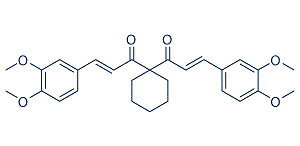 findings – that are highly significant and reproducible – we assume that these transcriptional factors affect the rate of transcription in the mutant by supporting the correct folding of the rRNA and thus improving rRNA maturation even in the absence of YbeY. The results presented here show the importance of YbeY for ongoing rRNA transcription elongation. They are also compatible with the findings that immature 16S RNA accumulates in ybeY deletion mutants, as a correct transcription antitermination process is required for accurate maturation of rRNA. The maintenance of an optimal transcription elongation rate which allows the proper maturation and folding of the rRNA becomes difficult when the temperature is increased, as at the higher temperatures the rate of transcription increases. Therefore, the suggested involvement of YbeY in the transcription antitermination process and in assuring proper RNA maturation implies that its importance may increase with temperature. This assumption is compatible with the finding that the ybeY deletion has a stronger phenotype at high temperatures – the deletion mutant is temperature sensitive. Moreover, YbeY is a conserved heat shock protein which is induced upon temperature shift-up, probably ensuring sufficient levels of this protein to satisfy the AbMole Aristolochic-acid-A increased requirement upon shift to higher temperatures. Passive immunization with appropriate amyloid beta antibodies has been shown to reduce extracellular amyloid deposition in hAPP transgenic mice, and numerous humanized monoclonal antibodies to various A? epitopes are making their way into clinical trials. The last few years has seen major developments in the tau field that seem likely to have a significant impact on the development of strategies to target insoluble tau aggregates. The idea that tau pathology can diffuse from cell to cell in a prion-like fashion has been shown by different laboratories. Additional publications seem to confirm the spreading of pathological tau in certain transgenic mouse models, again implying the existence of an extracellular tau species that is important in the development of the disease. These studies together with more recent data showing that tau is actively released from cultured cells suggest that, even under normal conditions, a significant amount of tau is present in the extracellular space. In this context, assuming that tau is at least in part an extracellular protein, efforts to target tau pathology with antibodies appear to be a reasonable exercise. Recent studies from different laboratories have strongly suggested that immunotherapy can be an effective means of preventing the development of tau accumulation. Our initial approach to passive immunotherapy was to attempt to classify the available tau monoclonal antibodies into groups, based on specificity for tau pathology relative to reactivity with normal tau.
findings – that are highly significant and reproducible – we assume that these transcriptional factors affect the rate of transcription in the mutant by supporting the correct folding of the rRNA and thus improving rRNA maturation even in the absence of YbeY. The results presented here show the importance of YbeY for ongoing rRNA transcription elongation. They are also compatible with the findings that immature 16S RNA accumulates in ybeY deletion mutants, as a correct transcription antitermination process is required for accurate maturation of rRNA. The maintenance of an optimal transcription elongation rate which allows the proper maturation and folding of the rRNA becomes difficult when the temperature is increased, as at the higher temperatures the rate of transcription increases. Therefore, the suggested involvement of YbeY in the transcription antitermination process and in assuring proper RNA maturation implies that its importance may increase with temperature. This assumption is compatible with the finding that the ybeY deletion has a stronger phenotype at high temperatures – the deletion mutant is temperature sensitive. Moreover, YbeY is a conserved heat shock protein which is induced upon temperature shift-up, probably ensuring sufficient levels of this protein to satisfy the AbMole Aristolochic-acid-A increased requirement upon shift to higher temperatures. Passive immunization with appropriate amyloid beta antibodies has been shown to reduce extracellular amyloid deposition in hAPP transgenic mice, and numerous humanized monoclonal antibodies to various A? epitopes are making their way into clinical trials. The last few years has seen major developments in the tau field that seem likely to have a significant impact on the development of strategies to target insoluble tau aggregates. The idea that tau pathology can diffuse from cell to cell in a prion-like fashion has been shown by different laboratories. Additional publications seem to confirm the spreading of pathological tau in certain transgenic mouse models, again implying the existence of an extracellular tau species that is important in the development of the disease. These studies together with more recent data showing that tau is actively released from cultured cells suggest that, even under normal conditions, a significant amount of tau is present in the extracellular space. In this context, assuming that tau is at least in part an extracellular protein, efforts to target tau pathology with antibodies appear to be a reasonable exercise. Recent studies from different laboratories have strongly suggested that immunotherapy can be an effective means of preventing the development of tau accumulation. Our initial approach to passive immunotherapy was to attempt to classify the available tau monoclonal antibodies into groups, based on specificity for tau pathology relative to reactivity with normal tau.
The formation of the transcription antitermination complex requires an RNA sequences
Which had been maintained in LIF, to ensure the presence of fully pluripotent embryonic cells, and in the absence of LIF to allow enhanced differentiation of the embryonic cells in vitro. In all cases the ES cells produced teratomas when inoculated by themselves, regardless of the presence or absence of LIF in culture. When normal adult MEC were mixed with ES cells, mammary outgrowths were produced relatively often where ES cells had contributed progeny during the regeneration of the mammary epithelium. This was unaffected by the presence or absence of LIF in the medium the week before implantation. We speculate that interaction of ES cells with mammary epithelial cells leads to differentiation of the ES cells towards a mammary epithelial cell fate. Our evidence suggests that ES cells differentiate into both luminal and basal mammary epithelial cells. Recent publications indicate that both luminal and basal mammary epithelial cells can contribute progeny to mammary epithelial outgrowths upon transplantation. Thus interaction of ES cells with either luminal or basal mammary epithelium may result in their differentiation along these distinct mammary epithelial cell fates. Our results indicate that interaction of ES cells with each other in the context of the mammary fat pad often leads to tumorigenesis. Fragments of the original chimeric mammary outgrowths were implanted to form second-generation transplants. The ES cell progeny continued to behave as non-tumorigenic mammary epithelial cells and contributed to all portions of developing glands. These results were interpreted to mean that the ES cells were able to stably occupy the reformed niches in the regenerated mammary gland, and function within these niches to give rise to fully differentiated progeny during secondary growth, and be selfrenewed and persist in second transplant generations in the absence of teratoma formation. When ES cells were allowed to differentiate in culture, there was no effect on the tumorigenic potential of ES cells, or the transcriptome of the resulting teratomas. There was also no statistically significant effect on the ability of the mammary microenvironment to induce ES cell differentiation to a mammary epithelial cell fate. It is possible further differentiation of ES cells may affect reprogramming efficiency, but it is clear from these results that interaction with the regenerating mammary microenvironment is, in most cases, nonphosphorylated- peptides distinguished associate cten sh2 sufficient to direct ES cells to adopt a mammary epithelial cell fate and not teratomas. We did not observe an inhibition or suppression of ES cell tumorigenesis when ES cells were mixed with MEC at a 1:1 ratio. We hypothesize that interaction between ES cells leads to a rapid production of teratoma, which overgrows any evidence for mammary outgrowth. As the 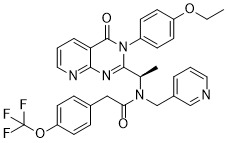 ratio between ES cells and MEC is decreased to 1:5 or 1:50 the chances that ES cells interact with MEC is increased and their interaction with other ES cells is decreased. We hypothesize that this interaction is important to tumor suppression. Efficient protein translation requires an accurate biogenesis of the ribosomes, which consists of a complex series of processes. It begins with the transcription of rRNA precursors from the seven rrn operons which undergo nucleolytic processing by RNases to generate the mature rrn molecules. The final steps of rRNA maturation occur in the early stages of protein synthesis by the newly-assembled ribosome. Transcription of the rrn genes is regulated mainly at the level of transcription initiation but further control involves an antitermination system which overcomes rho- dependent transcriptional terminators located along the rrn operon. This system prevents transcriptional polarity of the rrn operon and insures that all three RNA species are transcribed in equal amounts.
ratio between ES cells and MEC is decreased to 1:5 or 1:50 the chances that ES cells interact with MEC is increased and their interaction with other ES cells is decreased. We hypothesize that this interaction is important to tumor suppression. Efficient protein translation requires an accurate biogenesis of the ribosomes, which consists of a complex series of processes. It begins with the transcription of rRNA precursors from the seven rrn operons which undergo nucleolytic processing by RNases to generate the mature rrn molecules. The final steps of rRNA maturation occur in the early stages of protein synthesis by the newly-assembled ribosome. Transcription of the rrn genes is regulated mainly at the level of transcription initiation but further control involves an antitermination system which overcomes rho- dependent transcriptional terminators located along the rrn operon. This system prevents transcriptional polarity of the rrn operon and insures that all three RNA species are transcribed in equal amounts.
Some genomic DNA samples were not able to be extracted from paraffin embedded tissues
These treatments achieved a median time to progression of 3.2 months and a median overall survival of 9.8 months, suggesting that anti-EGFR targeted therapies have favorable efficacy in these patients. To our best knowledge, we are the first to comprehensively investigate the EGFR-RAS-RAF signaling pathway in a large set of patients with penile SCC. This might be ascribed to DNA-tissue protein cross-links and/or nucleic acid fragmentation due to aging of the specimen or the pH of the fixative. Nonetheless, KRAS and BRAF mutations analysis was finally performed in 94/150 and 83/150 of tumors, respectively. Mutation analysis was completed for more than half of the cases, and the absolute majorities of them had no mutation. This makes us believe that our current results are still valuable for evaluation of the status of EGFR-RAS-RAF signaling and supports the potential use of anti-EGFR mAbs in the treatment of penile SCC. The analysis of some downstream proteins of EGFR pathway is also very important for us to understand the mechanisms of pathogenesis of penile SCC. However, our study is a retrospective analysis which could not perform further mechanistic investigation. Thus, we are planning to proposal a prospective study to get more information about this disease. In earlier publications, we demonstrated that dispersed mouse testicular, neural, bone-marrow-derived cells and mouse and human cancer cells were redirected to normal mammary epithelial cell fates when inoculated into epithelium-cleared mammary fat pads with normal mouse mammary epithelial cells. Mouse embryonic stem cells, are derived from the inner cell mass of the blastocyst before germ layer formation occurs in the early embryo and are capable of forming all cell types of the developing and adult mouse. Because of this unique potential, they can be used to identify developmentally relevant signals that pattern the embryo to form tissues and organs. Based on our understanding of somatic cell reprogramming we sought to further investigate the potential dominant capacity of the mammary stem cell niche. The following experiments were designed to extend this observation by defining the inductive signals controlling this process by starting with the most undifferentiated stem cell, ES cells. Using mouse ES cells in vivo is often troublesome due to their tumorigenic potential to form teratomas when injected into immune compromised hosts. Studies by G Barry Pierce showed that only the undifferentiated cells in these tumors give rise to teratomas, the differentiated cells do not. Utilizing these undifferentiated cells allows evaluation of the mammary microenvironment’s ability to reprogram embryonic cells that have not yet committed to a cell fate, and test the mammary gland’s capacity to alter the teratoma-forming capability of mouse ES cells. Soriano developed mice designated ROSA Beta-geo 26 where expression of the Beta-geo reporter is constitutive during embryonic development. The embryonic stem cell cultures were derived from these mice. In these cultures LacZ expression marks all ES cells and makes them easily traceable in our experiments. Because LacZ expression is constitutive in these ES cells, our host animals do not need to be made pregnant prior to analysis as in previous experiments where WAP-Cre expression was the initiating activity. The ES cells are grown on irradiated embryonic fibroblasts in the presence of leukemia the effect astrocytes had on dopaminergic neurons is unclear antagonist treated animals
http://www.neuronalsignaling.com/index.php/2019/01/24/filling-phase-prior-micturition-intact-bladder/
http://kinaseinhibitorlibrary.com/index.php/2019/01/30/rationale-implementing-hacs-rates-guideline-recommended-proplylaxis/
http://www.celbiology.com/index.php/2019/01/30/nonphosphorylated-peptides-distinguished-associate-cten-sh2-domain/
http://www.interactivesignal.com/index.php/2019/01/23/the-effect-astrocytes-had-on-dopaminergic-neurons-is-unclear-antagonist-treated-animals inhibitory factor to prevent differentiation. Here we demonstrate that the mammary microenvironment is sufficient to suppress ES cell induced tumorigenesis and to provide signals necessary to induce differentiation of ES cells to a mammary 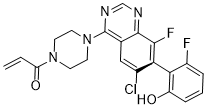 cell fate.
cell fate.